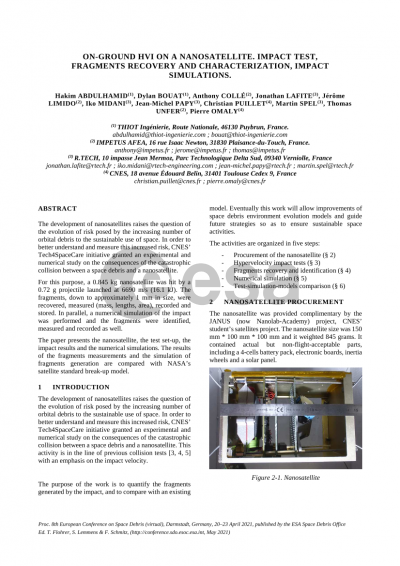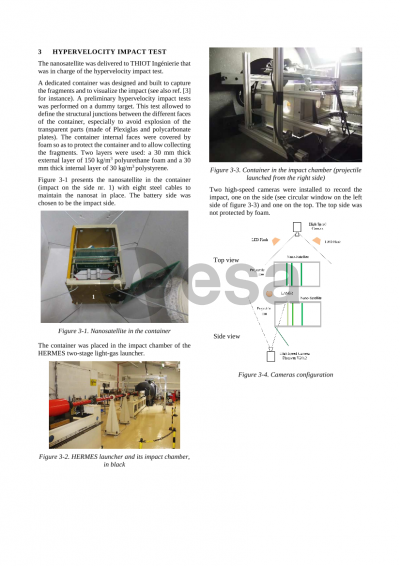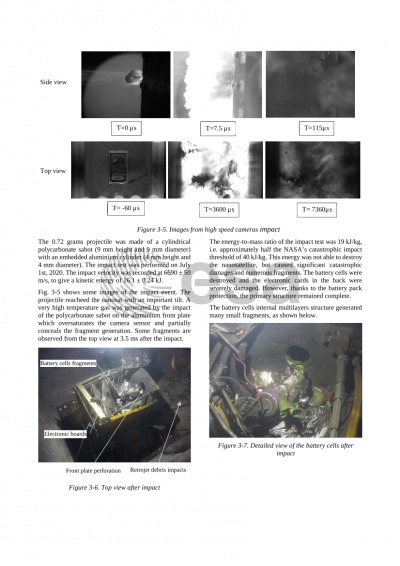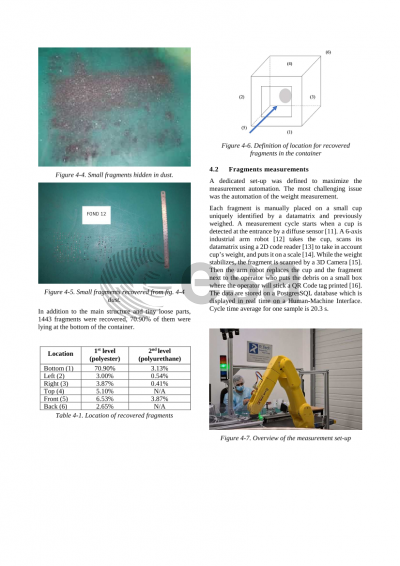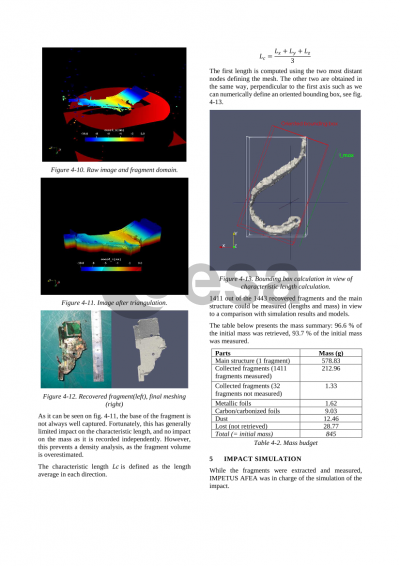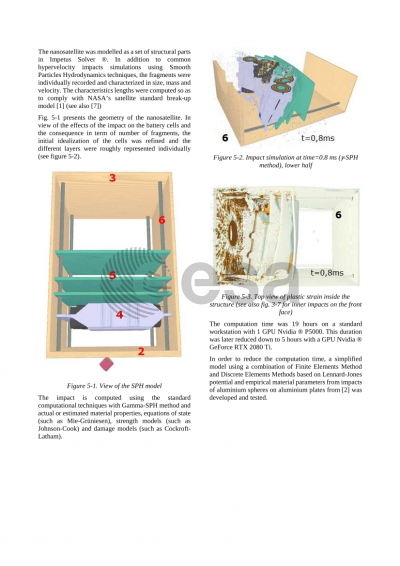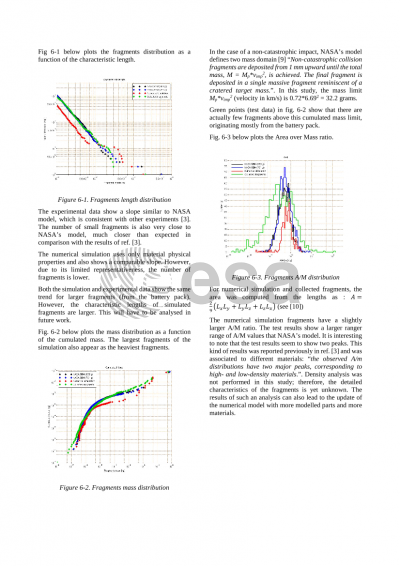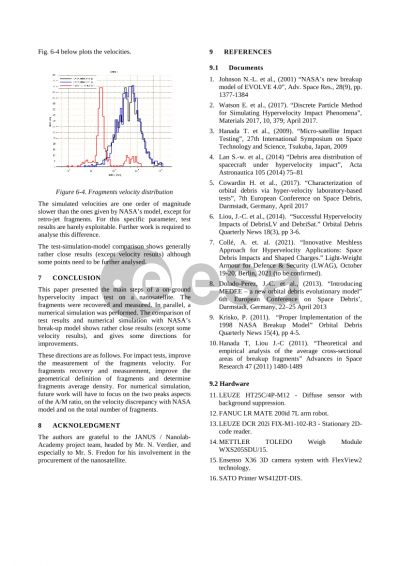Document details

Abstract
The development of nanosatellites raises the question of the evolution of risk posed by the increasing number of orbital debris to the sustainable use of space. In order to better understand and measure this increased risk, CNES’ Tech4SpaceCare initiative has granted an experimental and numerical study on the consequences of the catastrophic collision between a space debris and a nanosatellite.
A nanosatellite was hit by a 0.72 g projectile launched at 6690 m/s (16.1 kJ). The nanosatellite size was 150 mm * 100 mm * 100 mm and it weighted 845 grams. It contained actual but non flight-acceptable parts, including a 4-cells battery pack, electronic boards, inertia wheels and a solar panel. The nanosatellite was placed in a dedicated container. The container sides were covered by foam so as to protect the container and to allow collecting the fragments. The hypervelocity impact test was performed with Thiot Ingénierie’s HERMES hypervelocity gun. The projectile kinetic energy to target mass ratio was known not to be sufficient to completely destroy the nanosatellite, but to be able to cause catastrophic damages and numerous debris. The battery side was chosen to be the impact side.
The battery pack eventually protected the primary structure of the nanosatellite which remained complete. However, the internal parts were severely damaged and many small fragments were created by the battery pack. The container was then transferred to R.TECH premises in order to perform the identification of the fragments. The fragments were either embedded into the protective foam layers or loose at the bottom of the container. The fragments were extracted and collected; their characteristic lengths were measured with a 3D camera and they were weighted. The measurements together with their accuracy were defined so as to allow comparison with NASA’s satellite standard break-up model [1]. The fragments measurement activity was also analysed so as to allow future automation. It was shown that the weight measurement was the most complex activity to automate.
The nanosatellite was modelled as a set of structural parts in Impetus Solver ®. In addition to common hypervelocity impacts simulations using Smooth Particles Hydrodynamics techniques, the fragments are individually recorded and characterized in size, mass and velocity. The characteristics lengths are computed so as to comply with NASA’s satellite standard break-up model [1]. The simulation of a catastrophic impact on a whole spacecraft is a computational challenge. To evaluate the advantages and the drawbacks of a full simulation, two simulation methods are used: one using usual techniques with actual material properties, Equations of State (such as Mie-Grüniesen), strength models (such as Johnson-Cook) and damage models (such as Cockroft-Latham), and one using Discrete Elements Methods based on Lennard-Jones potential and empirical material parameters based on impacts of aluminium spheres on aluminium plates from [2].
The paper will present the nanosatellite, the test set-up, the impacts results and the numerical simulations. The results of the fragments identification and the fragments calculation are compared with NASA’s satellite standard break-up model.
Bibliography:
[1] N.L. Johnson et al., “NASA’s new breakup model of EVOLVE 4.0”, Adv. Space Res., 28(9), pp. 1377-1384 (2001)
[2] E. Watson et al., “Discrete Particle Method for Simulating Hypervelocity Impact Phenomena”, Materials 2017, 10, 379; April 2017.
Preview
